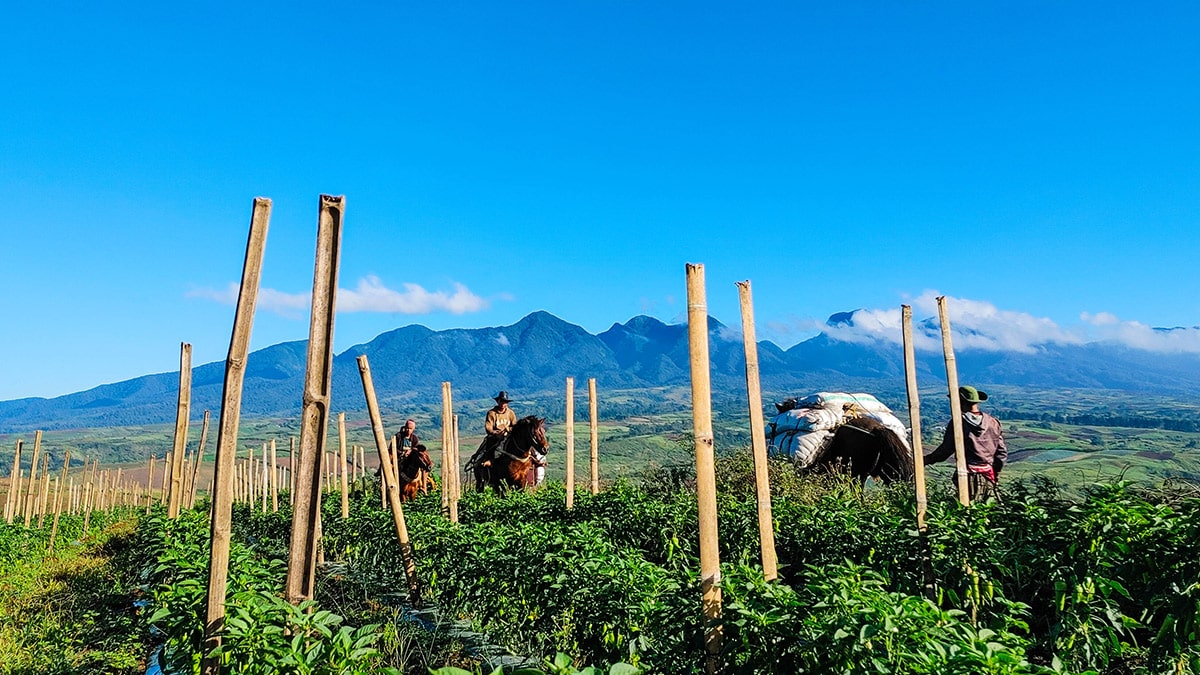$39.2-M FAO-backed project to help farmers cope with climate change

Farmers in Talakag, Bukidnon, use horses to transport produce from their farms, as Mt. Kitanglad, a national park, looms in the distance in this November 2023 photo. The cool climate and sweeping landscape of Talakag make it one of the favorite destinations for agri tourism in Northern Mindanao. —BOBBY E. LAGSA
MANILA, Philippines — A $39.2-million project will help 100 towns nationwide reduce carbon emissions through an initiative that aims to strengthen farmers’ resilience to climate change, according to the United Nations’ Food and Agriculture Organization (FAO).
In a statement on Tuesday, the FAO said priority areas include towns in Apayao, Ifugao, Kalinga, Cagayan, Isabela, Camarines Norte, Camarines Sur, Bukidnon, Cotabato, Northern Mindanao and Soccsksargen.
This forms part of the Adapting Philippine Agriculture to Climate Change (APA) Project of the Department of Agriculture (DA), the Philippine Atmospheric, Geophysical and Astronomical Services Administration under the Department of Science and Technology and the FAO.
READ: More spending on climate-resilient crops proposed
This seven-year initiative is supported by the $26-million grant from the Green Climate Fund while $12.9 million is co-financed by the Philippine government.
Tailored advisories
One of the components is the adoption of Climate Resilient Agriculture (CRA) practices, in which farmers, especially those from marginalized sectors, will be given timely climate information to support inclusive agri-enterprises and empower communities to lead climate adaptation efforts.
The project intends to deliver more localized and tailored climate and weather advisories by enhancing the Climate Information Service platform hosted by the DA’s Agro-Climatic Advisory Portal.
The platform will also help farmers manage climate risks, improve productivity and transition toward more resilient farming systems.
“By doing this, target communities will also have better access to climate-resilient technologies, financing, and markets,” it added.
High impact
READ: Changing farming practices could cut almost a third of global emissions
The FAO said incorporating CRA practices will directly support 205,000 farmers. Additionally, at least 45,000 farmers are expected to engage in agri-enterprise development, applying various CRA interventions to identified priority crops.
Once these interventions are implemented, they are expected to reduce the country’s total carbon emissions by approximately 218,875 tons of carbon dioxide per year.
The FAO estimated that the APA project would contribute about 0.033 percent to the Philippines’ Nationally Determined Contribution commitment currently set at 3,340.3 million tons of carbon dioxide emissions from 2020 to 2030.
About 5 million farmers are expected to indirectly benefit from the climate advisories, while 1.25 million members of vulnerable farming households are seen to directly gain from applying CRA practices and developing agri-enterprises.
